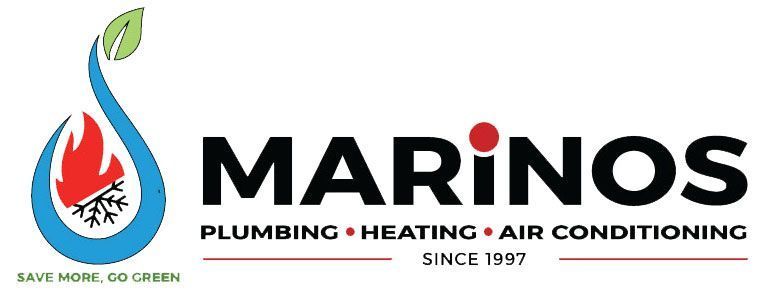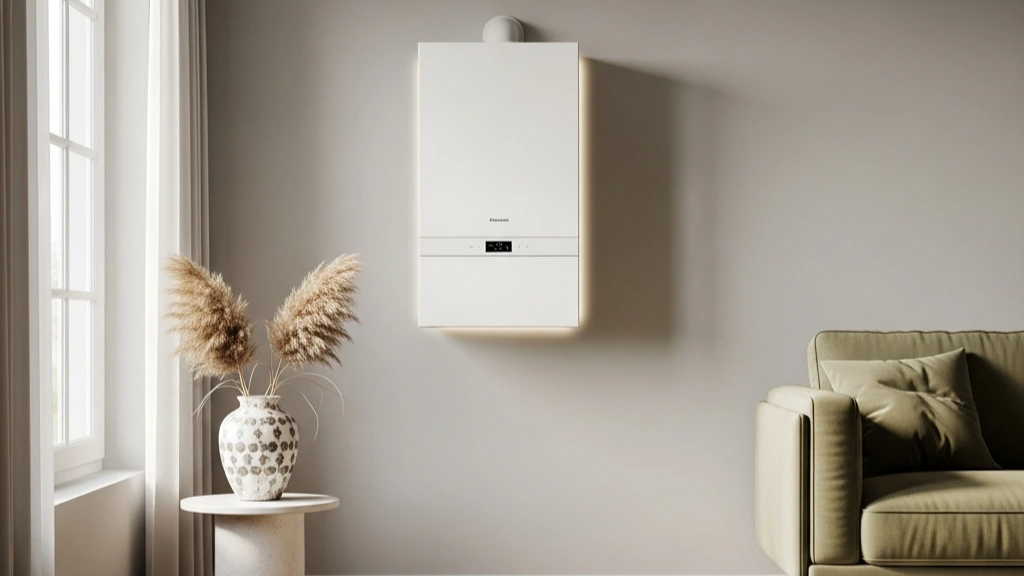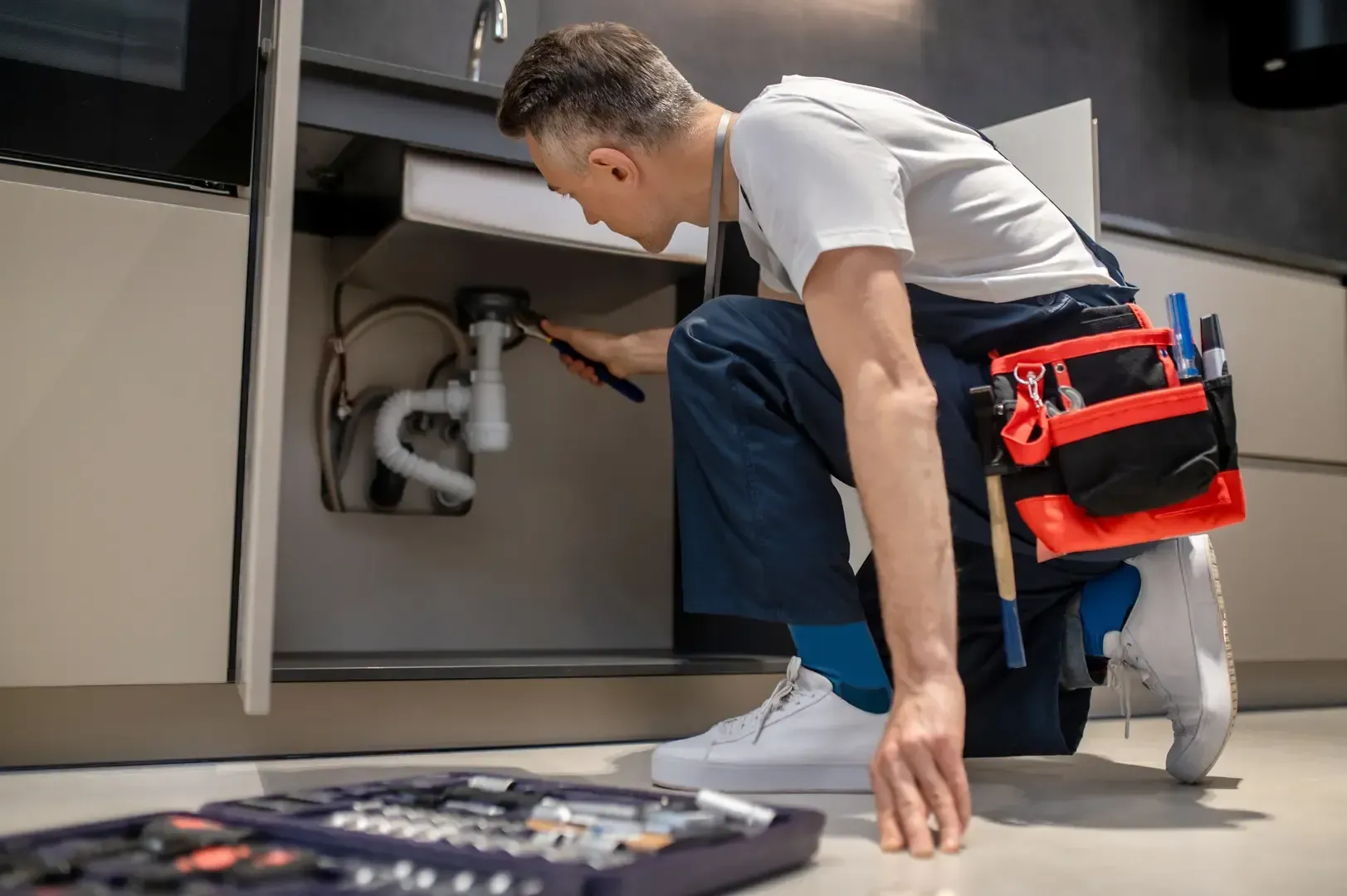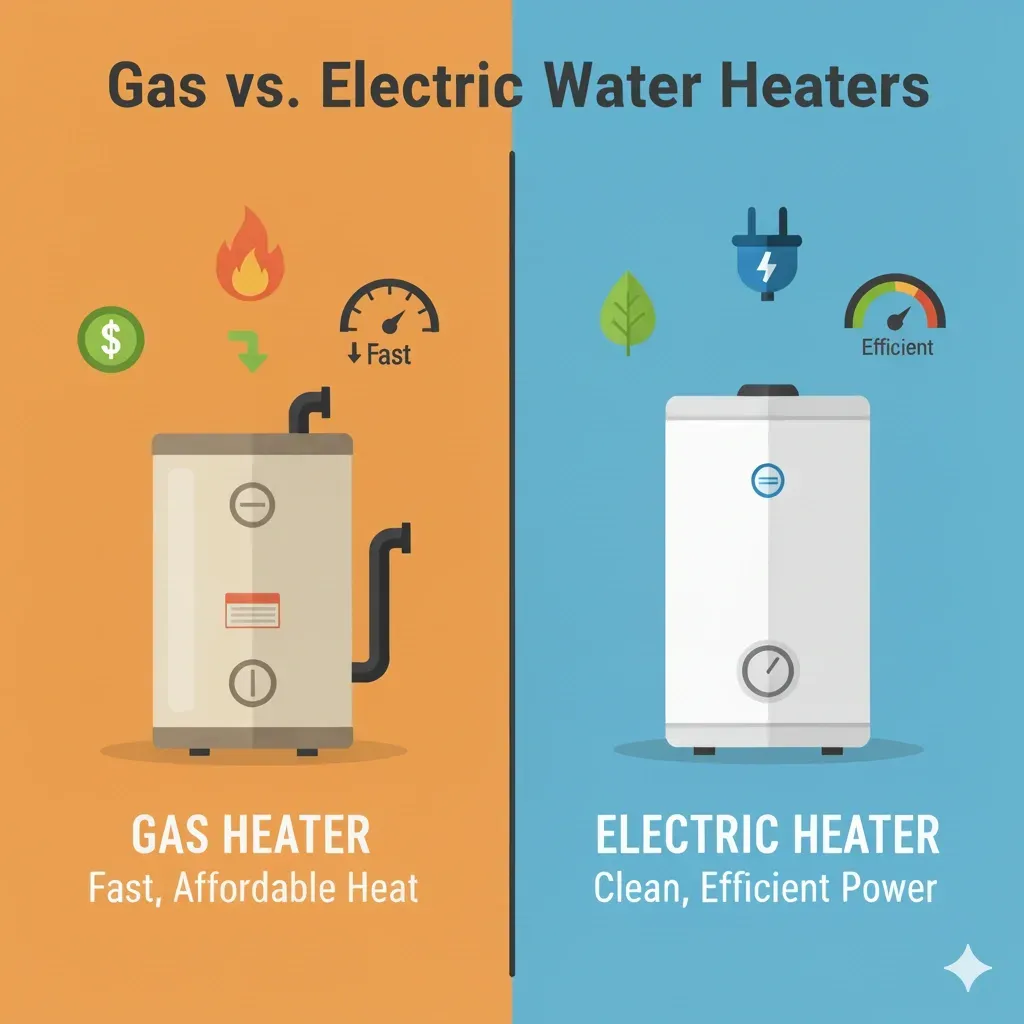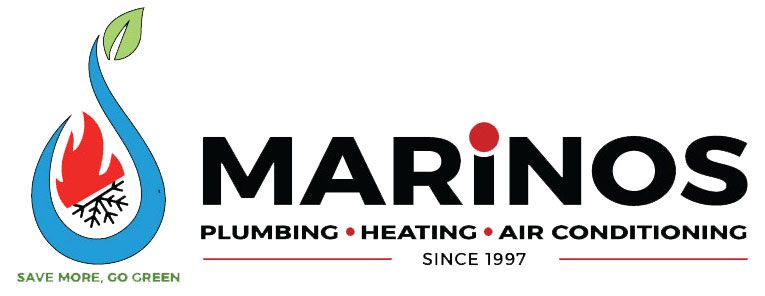Tank vs. Tankless: What’s the Best Hot Water Heater for Your Home?
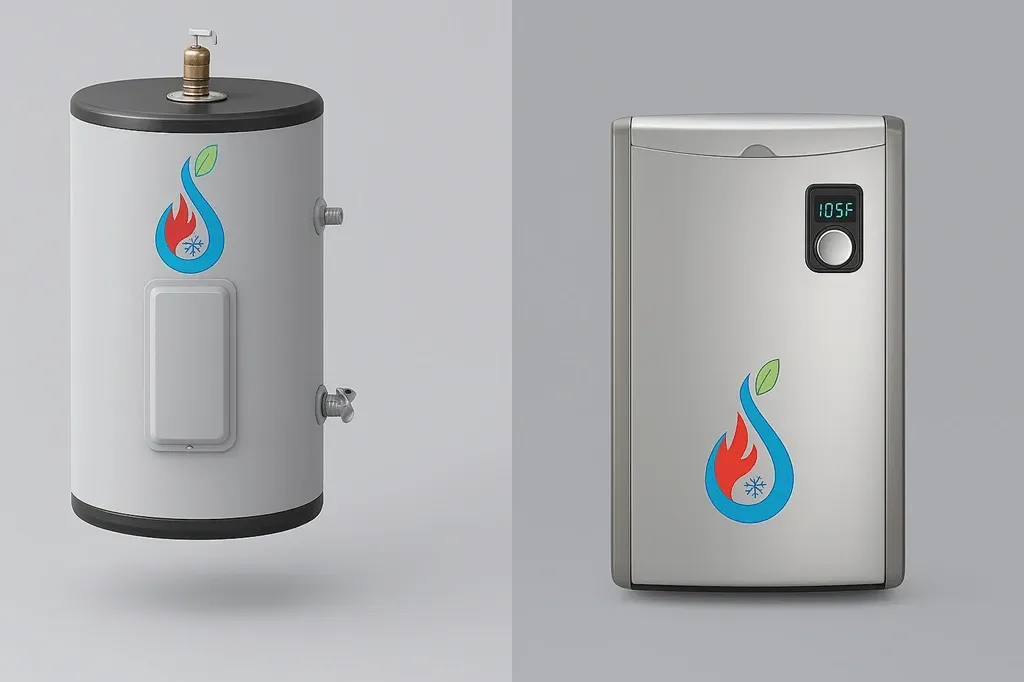
Hot water—it’s one of those household necessities you never think about until it’s gone. Whether it's for a warm shower, clean dishes, or laundry, a steady supply of hot water is non-negotiable. That’s why choosing the right water heater is a big deal. The two main contenders in the hot water world are tank water heaters and tankless water heaters. Both have their fans, and each comes with its own set of pros and cons. But how do you know which one is best for your home?
In this guide, we're diving deep into the tank vs. tankless debate to help you make an informed decision. From how they work, to energy efficiency, costs, lifespan, and even real-world user feedback—we’ve got it all covered. So grab a cup of coffee, and let’s find the best hot water solution for you.
Understanding Hot Water Heaters
What is a Tank Water Heater?
A tank water heater, also known as a storage water heater, is probably what you grew up with. It stores a set amount of water—usually between 30 to 80 gallons—and keeps it heated around the clock. Whenever you turn on the hot water tap, it draws from this reserve.
These heaters operate using either electricity or natural gas. The water inside the tank is heated to a pre-set temperature, and the system works continuously to maintain that temperature, even when you're not using hot water. It's a tried-and-true system, and while it might not be the most energy-efficient, it's incredibly reliable.
What makes tank water heaters appealing is their simplicity. They're generally less expensive to purchase and install, and repairs are straightforward. But they do have a big limitation: once the hot water in the tank runs out, you’ll need to wait for it to refill and reheat. That’s why long showers in big families can sometimes turn icy cold by the time the third person steps in.
What Is a Tankless Water Heater?
Tankless water heaters, also called on-demand water heaters, work very differently. Instead of storing hot water, they heat it as needed. When you turn on the hot water tap, cold water flows through a heat exchanger and gets instantly warmed up by either gas or electric power.
This design has a major perk: you never run out of hot water. Whether you’re taking a quick shower or filling a giant tub, the water just keeps coming. Tankless systems are also much more compact, making them perfect for homes with limited space.
The trade-off? They usually cost more upfront and might require upgrades to your home’s electrical or plumbing systems. Also, depending on the model, some tankless heaters may struggle to keep up with high simultaneous demand—say, two showers and a dishwasher running at the same time.
How Tank Water Heaters Work
Components and Mechanism
A tank water heater might seem simple on the outside, but it’s got a lot going on inside. Here's a breakdown of the main components:
- Tank: Insulated reservoir that stores heated water.
- Heating element or gas burner: Depending on whether it’s electric or gas-powered.
- Thermostat: Maintains desired water temperature.
- Anode rod: Prevents corrosion inside the tank.
- Dip tube: Brings cold water into the tank.
- Discharge pipe: Delivers hot water to your home’s faucets.
The mechanism is pretty straightforward. Cold water enters through the dip tube and gets heated by the burner or heating element. The thermostat keeps it at the set temperature. When you use hot water, it exits through the top while new cold water enters at the bottom, starting the cycle again.
Pros and Cons of Tank Water Heaters
Pros:
- Lower initial cost
- Simpler installation
- Easier to maintain and repair
- Readily available parts and models
Cons:
- Limited hot water supply
- Higher energy consumption due to standby heat loss
- Bulkier and needs more space
- Shorter lifespan compared to tankless models
If budget and simplicity are your main concerns, a tank water heater might still be the right choice. But if efficiency and space-saving are high on your list, you might want to keep reading.
How Tankless Water Heaters Work
On-Demand Heating Process
A tankless water heater heats water directly without the use of a storage tank. When you turn on the hot water tap, here’s what happens:
- Cold water enters the unit.
- A flow sensor detects the water and activates the heating element.
- Water is rapidly heated as it passes through the exchanger.
- Hot water is delivered directly to your faucet.
The beauty of this system is its efficiency. You’re only using energy when you need hot water—no standby losses like with tank heaters. These units can be mounted on walls, both inside and outside, which frees up valuable floor space.
Most modern models come with digital temperature controls, and some even integrate with smart home systems for remote operation. It's hot water reimagined for the tech-savvy household.
Pros and Cons of Tankless Water Heaters
Pros:
- Endless hot water supply
- More energy-efficient
- Compact and space-saving
- Longer lifespan (20+ years)
Cons:
- Higher upfront cost
- Installation can be complex and costly
- May require additional upgrades (venting, gas lines, etc.)
- Performance can vary based on flow rate
In essence, a tankless system is a long-term investment. The savings on energy bills and the convenience of instant hot water often outweigh the higher initial expense—especially for modern households with higher water demands.
Energy Efficiency Comparison
Energy Use in Tank Water Heaters
Tank water heaters are notorious for what's known as standby heat loss. Since they maintain a large volume of water at a set temperature 24/7, they consume energy even when you're not using hot water. Think of it like keeping your car engine running all day just so it's ready to drive whenever you need it—super convenient, but not very efficient.
Most traditional tank models have an Energy Factor (EF) ranging from 0.50 to 0.70. This means about 30% to 50% of the energy used is actually wasted. Modern tanks are more efficient than older models, thanks to better insulation and improved burners or heating elements, but they still lag behind their tankless counterparts.
If you live in a region with high energy costs or want to reduce your carbon footprint, a standard tank model might end up being more expensive over time. However, they can be upgraded with insulation blankets or timers to improve efficiency, though these are just stop-gap solutions.
Energy Use in Tankless Water Heaters
Tankless water heaters, on the other hand, are all about efficiency. Because they only heat water when it’s needed, they can achieve an Energy Factor of 0.82 to 0.99, depending on the model. That means very little energy is wasted.
Gas-powered tankless models are especially efficient, and newer condensing models push the boundaries even further by capturing and reusing heat from exhaust gases. This makes them an eco-friendly choice for the energy-conscious homeowner.
Another big plus? You don’t need to keep water hot when no one's using it, which can shave a significant chunk off your monthly energy bills. Over the course of a year, a tankless unit could save a household hundreds of dollars, especially in homes with lower hot water demands.
Long-Term Cost Implications
It’s true that tankless water heaters are more expensive upfront—sometimes double or even triple the cost of a traditional tank unit. But here’s where it gets interesting: over a 10- to 20-year period, those energy savings add up.
Let’s break it down:
1. Average Lifespan
- Tank Heater: 8–12 years
- Tankless Heater: 20+ years
2. Energy Use
- Tank Heater: Uses energy continuously to keep water heated.
- Tankless Heater: Heats water on-demand, only when needed.
3. Monthly Energy Cost
- Tank Heater: Typically higher due to constant energy use.
- Tankless Heater: Lower energy cost thanks to efficient operation.
4. Annual Savings
- Tank Heater: No notable savings.
- Tankless Heater: Average savings of $80–$100 per year.
5. Maintenance Cost
- Tank Heater: Lower maintenance cost.
- Tankless Heater: Slightly higher maintenance cost.
So, if you’re playing the long game and are willing to invest upfront, a tankless model is likely to pay for itself, especially when combined with energy rebates or tax incentives.
Installation and Space Requirements
Installation Process for Tank Units
Installing a tank water heater is relatively straightforward, especially if you're replacing an old unit with a new one of the same type and size. The plumber typically disconnects the old unit, hooks up the new one, and you’re good to go in a few hours.
The main considerations for tank installations are:
- Space availability: These units are bulky, often 4–6 feet tall and 2–3 feet in diameter.
- Drainage: They need a floor drain nearby in case of leaks.
- Ventilation (for gas models): Proper exhaust is essential to prevent the buildup of dangerous gases.
If your home already has the necessary hookups, the whole process is a breeze. And because tank heaters are more common, most plumbers can install them quickly and at a lower cost.
However, if you’re installing a unit in a tight or unusual space—like a closet or attic—you might face limitations. The unit has to be upright and accessible for maintenance, which means it’s not the best option for homes with space constraints.
Space-Saving Design of Tankless Units
This is where tankless water heaters really shine. These compact units can be mounted almost anywhere—on a wall in a utility closet, in the garage, or even outside your house if weather permits.
Their small size opens up possibilities for installation in apartments, tiny homes, and other space-sensitive environments. In fact, you can even install multiple units for different parts of the house—a strategy known as point-of-use heating.
Installation is more complex, though. Depending on your setup, you might need:
- Electrical upgrades (for electric units)
- Larger gas lines (for gas-powered models)
- New ventilation systems
- Permit approvals in some areas
All of this makes the initial install cost higher, sometimes $1,500 to $3,000 compared to $600 to $1,200 for a tank model. But for many homeowners, the space savings and efficiency gains are well worth it.
Upfront Costs vs. Long-Term Savings
Initial Investment
Tank water heaters typically cost between $400 and $1,200, depending on size and energy source. Installation runs about $300 to $800, making the total upfront investment manageable for most households.
Tankless units range from $800 to $2,500, and installation can be $1,000 to $3,000, especially if you need to retrofit your home with new plumbing or ventilation. That can be a dealbreaker if you're on a tight budget or need a quick replacement.
So why go tankless? Because over time, those higher upfront costs often translate into real savings. You use less energy, which means lower monthly bills. And because tankless models last up to twice as long, you're not replacing them every decade.
Maintenance and Repair Costs
Tank heaters require routine maintenance like flushing the tank annually to prevent sediment buildup. They also need their anode rod replaced every few years to prevent corrosion. These costs are relatively low but can add up if neglected.
Tankless models need descaling every 1–2 years, especially in areas with hard water. Parts can be more expensive, and not all plumbers are equally skilled at servicing these units. But they have fewer problems overall, and many come with longer warranties.
Lifespan and Durability
Expected Lifespan of Tank Heaters
Tank water heaters are built for functionality, not longevity. Most models last 8 to 12 years, depending on maintenance, water quality, and usage. If you're diligent about annual flushing and replace the anode rod every few years, you might squeeze out a couple more years. But generally, once a tank starts to fail—usually through leaks or corrosion—replacement is inevitable.
Corrosion is the biggest enemy here. Despite internal glass linings and anode rods designed to protect the tank’s interior, over time minerals and rust take their toll. And once a tank starts leaking, repairs are not an option; it has to be replaced.
The wear and tear also extend to the heating elements or gas burners, which may need to be replaced within the unit’s lifespan. While repairable, those costs can add up, and often homeowners opt to replace the entire unit rather than patch up an old one nearing the end of its usefulness.
Expected Lifespan of Tankless Heaters
Tankless water heaters are a different story. These units often last 20 years or more, especially with proper care. Because they don’t store water, they avoid the corrosion issues that plague tank models. Most high-quality tankless systems also use modular components, so if something breaks, you can replace just that part instead of scrapping the whole unit.
Routine maintenance—mainly descaling to prevent mineral buildup—goes a long way in preserving longevity. Some models even come with self-cleaning features or alerts that let you know when service is needed.
From a durability standpoint, tankless units clearly win. They're designed with fewer parts that degrade over time and are less likely to spring a surprise leak. If you’re looking for a "set it and forget it" system with minimal upkeep and fewer replacements, tankless is your best bet.
Water Usage and Household Size
Best Option for Small Homes
For smaller homes, apartments, or condos—especially those with only one or two residents—a tankless water heater can be a game-changer. These homes generally have lower hot water demand, and a single tankless unit can easily keep up.
Tankless heaters shine in these scenarios because:
- They don’t waste energy heating unused water.
- They don’t take up valuable storage space.
- You save money on both utility bills and maintenance.
If your usage is modest, you won't overload the flow rate of a tankless unit. That means consistent water temperature even during peak use. In short, tankless heaters are tailor-made for efficient, minimalist living.
Best Option for Large Families
Bigger households present a more complex picture. If you’ve got multiple people showering, doing dishes, running laundry, and using sinks simultaneously, you might think a large-capacity tank is the obvious answer. And in some cases, it is—particularly if you're on a tight budget.
However, tankless systems are still viable. You just have to go bigger or install multiple point-of-use units. A single whole-house tankless unit with a high GPM (gallons per minute) rating—around 8 to 10 GPM—can support multiple outlets at once. Some families also install two smaller units: one for bathrooms, another for kitchen/laundry. This setup ensures simultaneous use without hiccups.
The key here is planning. Large homes benefit most from tankless units when water usage patterns are known and consistent. If you want scalability, energy savings, and future-proofing, tankless still has the edge. But if you're not ready for the extra investment or don't want the hassle of load planning, a high-capacity tank heater is a reliable alternative.
Choosing the Right Model for Your Home
Factors to Consider
Choosing between a tank and tankless water heater isn’t just about one being better than the other. It’s about what works best for your home, your lifestyle, and your budget. Here are the most important factors to weigh:
- Household Size: The number of people using hot water daily matters. Large families might lean toward high-capacity tank heaters or multiple tankless units.
- Hot Water Demand: Think about your peak usage. Do multiple people shower at once? Do you run the dishwasher and washing machine simultaneously?
- Space Availability: Tank heaters need floor space, while tankless units can mount on walls—even outside in some cases.
- Budget Constraints: Tank heaters are cheaper upfront but cost more in the long run. Tankless units require a bigger initial investment but save on monthly bills.
- Water Quality: Hard water can shorten the life of both systems. A water softener might be necessary, especially for tankless systems.
- Energy Source: Is your home better equipped for electric or gas appliances? Some homes may need electrical or gas line upgrades for tankless installation.
A tank heater is often best for short-term homeownership, rental properties, or limited budgets. A tankless unit shines for long-term homeowners wanting efficiency, space savings, and future-ready infrastructure.
Recommendations Based on Lifestyle
- For solo homeowners or couples in apartments: A small electric tankless unit is ideal. It’s efficient, compact, and meets your needs without overkill.
- For families in suburban homes: A large-capacity tank or a powerful whole-house tankless unit with high GPM is your best bet.
- For environmentally-conscious users: Go tankless. Pair it with smart controls or even solar for maximum eco-impact.
- For budget-conscious homeowners: Stick with a traditional tank. It’ll save you now, and you can always upgrade later.
- For tech-savvy homeowners: Look for Wi-Fi-enabled tankless systems that let you control water temps and monitor usage from your smartphone.
Remember, there’s no universal “best” model—only what’s best for you.
Common Myths Debunked
Misconceptions About Tank Heaters
- “Tank heaters are inefficient dinosaurs.”
Not always true. Modern tank heaters have improved insulation and high-efficiency ratings that make them much better than their predecessors. - “They always run out of hot water.”
Only if you exceed the tank’s capacity. Choosing the right size and practicing staggered usage solves this. - “They’re dangerous because they can explode.”
While pressure buildup is real, safety valves and thermostats make explosions extremely rare in modern units.
Misconceptions About Tankless Heaters
- “Tankless heaters deliver instant hot water.”
Not exactly. They heat water on demand, but it still takes a few seconds for the hot water to reach your tap depending on distance and piping. - “They’re too expensive to be worth it.”
While the upfront cost is high, energy savings and longevity often offset the price over time. - “They don’t work well in cold climates.”
Modern models have freeze protection and high-performance ratings, even in cold areas. - “They can’t handle large homes.”
Multiple tankless units or one with a high GPM rating can easily serve large households.
Expert Tips for Making the Switch
Preparing for Installation
Thinking of upgrading or switching from a tank to a tankless water heater—or vice versa? Here’s how to get ready:
- Assess your energy source: Find out whether your home is better equipped for electric or gas systems. This determines your options and installation complexity.
- Check for local permits: Especially for tankless units, many municipalities require permits or inspections before and after installation.
- Upgrade if needed: Switching to a tankless unit might require a larger gas line, improved venting, or upgraded electrical connections.
- Consult a professional: An experienced plumber will help evaluate your setup, recommend the right unit, and handle the necessary upgrades.
If you're in Saskatchewan and looking for expert guidance, Marino’s Plumbing is your go-to local specialist. With a stellar reputation for quality service, prompt installations, and honest pricing, Marino’s Plumbing makes the transition easy. Whether you're upgrading your home or building new, they provide custom solutions tailored to your needs.
Why Marino’s Plumbing?
- Licensed and insured professionals
- Specializing in tank and tankless water heater installation
- Up-to-date with local Saskatchewan codes and permit requirements
- Trusted by homeowners for over a decade
Planning ahead and working with experts like Marino’s Plumbing eliminates stress and ensures your installation is safe, efficient, and fully code-compliant.
Hiring a Professional vs. DIY
Installing a tank water heater might be feasible for experienced DIYers—especially if you’re just replacing an existing unit. But for tankless systems, professional help isn’t just recommended—it’s often required.
Tankless installations typically involve:
- Upgrading gas or electrical infrastructure
- Installing proper ventilation systems
- Programming the digital control unit
- Navigating building permits and local codes
These aren’t tasks to take lightly. Mistakes can lead to poor performance, warranty voids, or safety hazards.
Bottom line? Unless you’re a licensed pro yourself, it’s smarter and safer to call the experts. And if you’re in Saskatchewan, Marino’s Plumbing is the team to trust. They’ll handle every aspect of the job—from product selection to the final hookup—with professionalism and care.
Visitmarinosplumbing.ca to schedule your consultation today!
Conclusion
The tank vs. tankless debate ultimately comes down to your lifestyle, home setup, and long-term goals. If you’re looking for a lower upfront cost and a straightforward install, a traditional tank water heater still holds value. But if you crave endless hot water, better energy efficiency, and long-term savings, the tankless route is a smarter investment.
In the end, there's no one-size-fits-all solution. The best water heater is the one that fits your life. So weigh your needs, talk to a pro, and make the switch that works for you—not just for now, but for the years to come.
FAQs
1. Which heater saves more money?
Tankless heaters generally save more in the long run due to lower energy use and longer lifespans.
2. Do tankless heaters provide instant hot water?
Not instantly—but they start heating as soon as you open the tap. Some setups include a recirculating pump for quicker delivery.
3. Is it hard to switch from tank to tankless?
It can be. You may need gas or electrical upgrades and permits. But once installed, the benefits are worth it.
4. What’s the most reliable water heater brand?
Rheem, Rinnai, Bosch, and A.O. Smith are among the most trusted brands for both tank and tankless units.
5. How long does installation take?
Tank units take 2–4 hours; tankless installations can take a full day or more if upgrades are needed.
